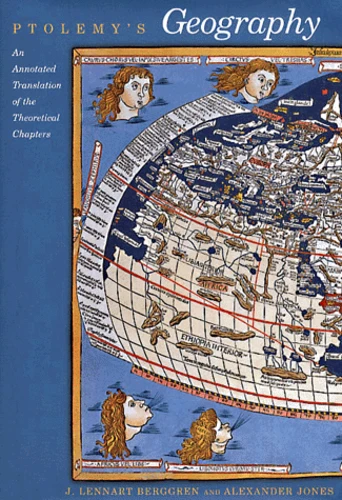Ptolemy'S Geography. An Annotated Translation Of The Theoretical Chapters
Par : ,Formats :
- Paiement en ligne :
- Livraison à domicile ou en point Mondial Relay estimée à partir du 8 décembreCet article sera commandé chez un fournisseur et vous sera envoyé 10 jours après la date de votre commande.
- Retrait Click and Collect en magasin gratuit
- Livraison à domicile ou en point Mondial Relay estimée à partir du 8 décembre
- Nombre de pages192
- PrésentationRelié
- Poids0.65 kg
- Dimensions18,5 cm × 26,0 cm × 2,0 cm
- ISBN0-691-01042-0
- EAN9780691010427
- Date de parution27/11/2000
- ÉditeurPrinceton University Press
Résumé
Ptolemy's Geography is the only book on cartography to have survived from the classical period and one of the most influential scientific works of all time. Written in the second century A.D., for more than fifteen centuries it was the most detailed topography of Europe and Asia available and the best reference on how to gather data and draw maps. Ptolemy championed the use of astronomical observation and applied mathematics in determining geographical locations. But more important, he introduced the practice of writing down coordinates of latitude and longitude for every feature drawn on a world map, so that someone else possessing only the text of the Geography could reproduce Ptolemy's map at any time, in whole or in part, at any scale. Until now there has been no authoritative or even satisfactory English translation. Here Berggren and Jones render an exemplary translation of the Geography and provide a thorough introduction, which treats the historical and technical background of Ptolemy's work, the contents of the Geography, and the later history of the work. Also included here are unique color reproductions of maps manuscripts and early printed editions of the text, representative of the beautiful and practical cartographic artistry that flowed from Ptolemy's work. Historians of science, classicists, and anyone who enjoys beautiful maps or map making will find this work an indispensable addition to their library.
Ptolemy's Geography is the only book on cartography to have survived from the classical period and one of the most influential scientific works of all time. Written in the second century A.D., for more than fifteen centuries it was the most detailed topography of Europe and Asia available and the best reference on how to gather data and draw maps. Ptolemy championed the use of astronomical observation and applied mathematics in determining geographical locations. But more important, he introduced the practice of writing down coordinates of latitude and longitude for every feature drawn on a world map, so that someone else possessing only the text of the Geography could reproduce Ptolemy's map at any time, in whole or in part, at any scale. Until now there has been no authoritative or even satisfactory English translation. Here Berggren and Jones render an exemplary translation of the Geography and provide a thorough introduction, which treats the historical and technical background of Ptolemy's work, the contents of the Geography, and the later history of the work. Also included here are unique color reproductions of maps manuscripts and early printed editions of the text, representative of the beautiful and practical cartographic artistry that flowed from Ptolemy's work. Historians of science, classicists, and anyone who enjoys beautiful maps or map making will find this work an indispensable addition to their library.

